

Cool Tech for Reading and Writing Braille
Today, kids who want to read and write braille have lots of choices of cool gear to use, both low-tech and high-tech. Some devices emboss (print) braille books and other documents. Others use refreshable pins that change so kids can read or write in braille using a computer or smartphone. Some devices are simple and inexpensive and others are very complicated. The devices below are used by people who read braille to do schoolwork, take care of personal business, and do their jobs at work.
Slate and Stylus
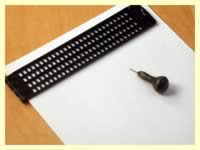
A slate and stylus is inexpensive, portable tool used to write braille—similar to the way paper and pencil are used for writing print. Slates are made of two flat plates of metal or plastic held together by a hinge. The slate opens up, then clamps down to hold the paper. The top plate has rows of openings that are the same shape and size as a braille cell, while the back plate has rows of indentations in the size and shape of braille cells. The stylus is a pointed piece of metal with a plastic or wooden handle. The stylus is used to punch (emboss) the braille dots onto the paper. The tricky part? The user has to learn to write braille backwards so that it reads correctly when removed from the slate! With practice, a kid with a slate and stylus can write braille pretty fast.
Braillewriter
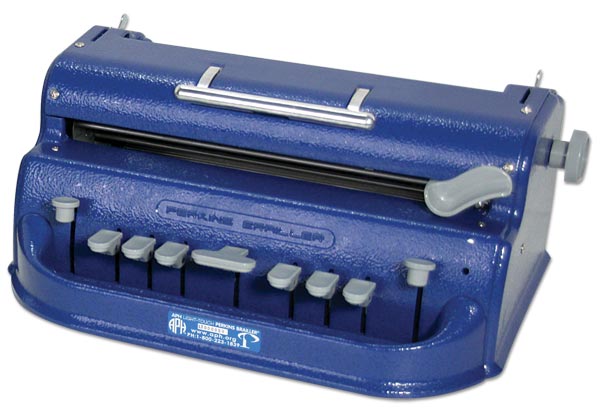
A braillewriter is also called a brailler. A mechanical braillewriter works a little bit like a typewriter. It has six keys—one for each dot in a braille cell—a space bar, a backspace key, a carriage return, and a line feed key. Like a slate and stylus, a braillewriter uses heavyweight paper that will hold the braille dots well. It takes practice to use a brailler, but some kids can write quickly using one!
Braille Displays
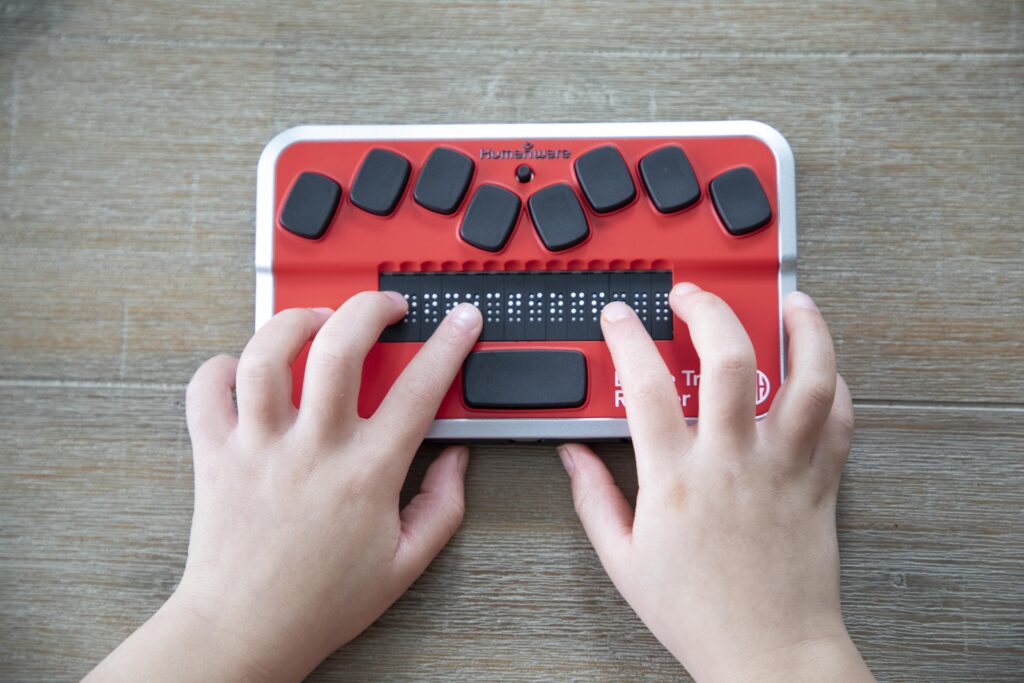
A braille display is a high-tech device that has a row of braille cells made of plastic or metal pins. The pins are controlled by a computer, smartphone, or tablet and move up or down to display, in braille, the characters that appear on the screen. This type of braille is called “refreshable” because it changes as the user moves around on the screen. It’s kind of magical watching the braille characters change, then change again! Braille displays connect to your phone or tablet via Bluetooth®, and can connect to your computer using Bluetooth or a USB cable. Smaller braille displays can fit in a jacket pocket and are great for texting or interacting with apps on your phone or tablet. Larger braille displays are usually found in places like offices.
Braille Notetakers
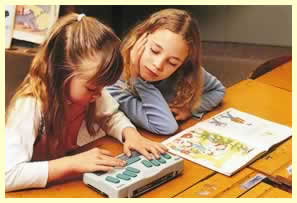
Electronic braille notetakers are portable devices with braille-style or computer-style keyboards that kids can use to enter information. Some notetakers are powerful enough that they are similar to a tablet. The text stored in these devices can be read with a built-in braille display or with a synthesized voice. These devices are handy for taking notes in class. Many notetakers have special apps that make specific tasks simple for students who are blind. For instance, all modern notetakers have the ability to have mathematical symbols show up correctly for sighted teachers. The most popular notetakers are built on the Android® platform so you can install apps from places like the Google Play Store®. Notetakers can also be used as braille displays to interact with your smartphone, tablet, or computer.
Braille Embossers (Printers)
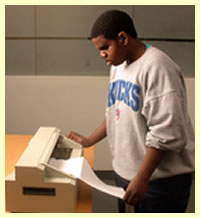
Braille embossers are devices connected to a computer and are similar to an ink printer. An embosser rapidly creates braille dots on thick braille paper that often feeds through on a track. Just like an ink printer, kids who use braille can emboss anything they need, such as notes, homework, reports, and other files from the computer. Braille embossers can be a bit loud, making a bratttttt sound, but they get the job done!



